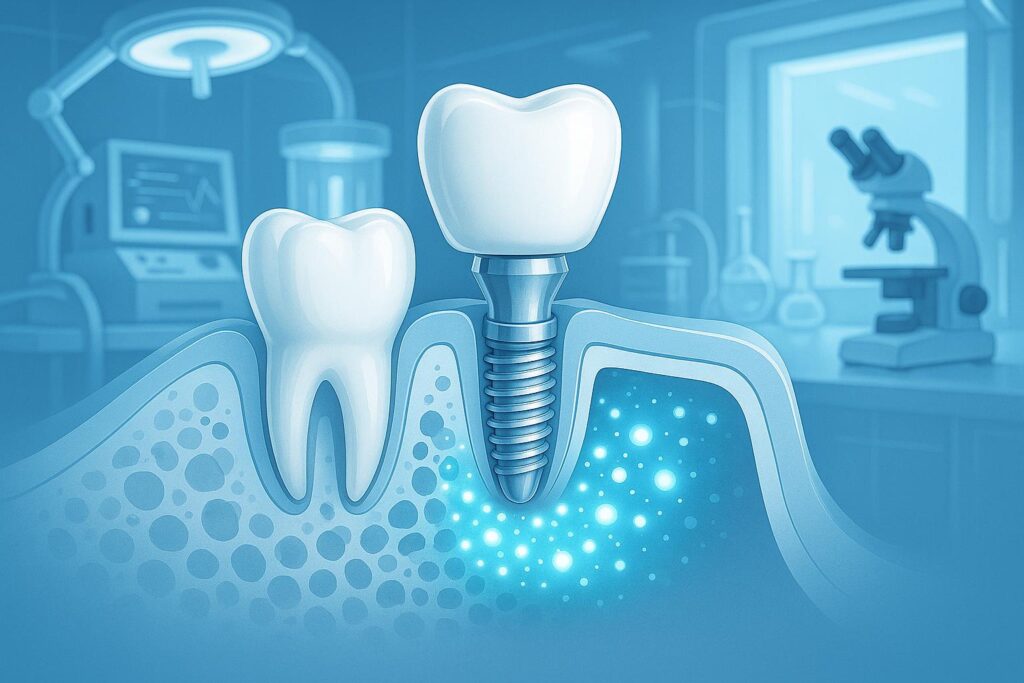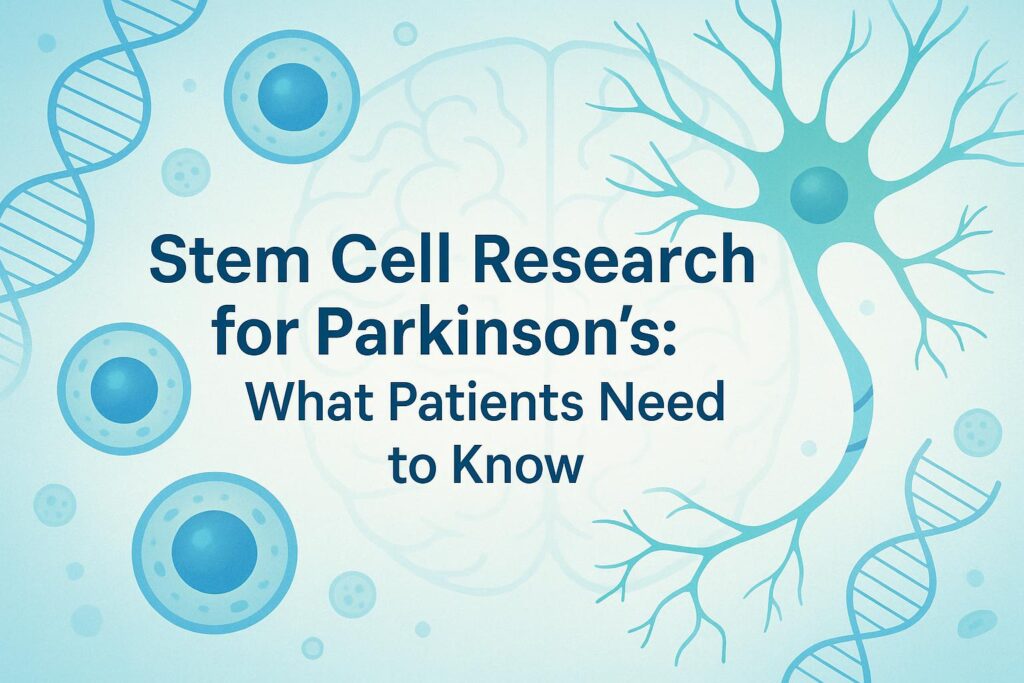Have you ever wondered how stem cell IV therapy can potentially heal damaged tissues and improve your health?
Stem cells have incredible regenerative properties and the ability to differentiate into specialized cells, making them a powerful tool in modern medicine. In stem cell IV therapy, these remarkable cells are infused directly into your bloodstream, where they can travel to damaged or lost cells, promoting tissue repair and regeneration.
But how exactly does this groundbreaking therapy work? Let’s delve deeper into the science behind stem cell IV therapy and discover its potential for optimizing your well-being.

Key Takeaways:
- Stem cell IV therapy introduces stem cells directly into the bloodstream for potential tissue repair and regeneration.
- Stem cells have regenerative properties and the ability to differentiate into specialized cells.
- During the therapy, prepared stem cells are infused into the patient’s bloodstream, where they can travel to damaged or lost cells and promote tissue repair.
- Stem cell IV therapy offers numerous potential benefits, including the regeneration of damaged tissues, pain relief, and improved quality of life.
- Further research and clinical trials are necessary to determine the lasting benefits and long-term effectiveness of stem cell IV therapy.
What is stem cell IV therapy?
Stem cell IV therapy, also known as intravenous stem cell therapy or stem cell infusion, is a revolutionary medical treatment that harnesses the regenerative power of stem cells. This cutting-edge approach shows incredible promise for the treatment of various medical conditions, making it a significant advancement in the field of regenerative medicine.
During stem cell IV therapy, stem cells are administered directly into the patient’s bloodstream through an intravenous drip or injection. This allows the stem cells to circulate throughout the body, targeting damaged or diseased tissues and organs. The stem cells have the remarkable ability to promote tissue repair, regeneration, and reduce inflammation, offering potential benefits for individuals suffering from a range of conditions.
By delivering stem cells intravenously, this therapy offers a minimally invasive and effective approach to help the body heal itself. It has shown promising results in the treatment of neurodegenerative diseases, autoimmune disorders, cardiovascular conditions, orthopedic injuries, and wound healing.
The regenerative properties of stem cell IV therapy make it an exciting area of research and a potential game-changer in the medical field. By leveraging the body’s own natural healing mechanisms, stem cell IV therapy holds the key to unlocking new possibilities in restoring health and improving the quality of life for many individuals.
How does stem cell IV therapy work?
Stem cell IV therapy harnesses the power of stem cells to promote tissue repair, regeneration, and reduce inflammation within the body. During the therapy, stem cells are introduced into the patient’s bloodstream through intravenous infusion. Once in the circulatory system, these stem cells have the remarkable ability to seek out damaged or diseased tissues and organs.
Upon reaching their target, stem cells can differentiate into specific cell types, kickstarting the healing process by promoting tissue repair and regeneration. Additionally, they help to reduce inflammation, which is often a contributing factor to the progression of various diseases.
By leveraging the body’s innate healing abilities, stem cell IV therapy plays a crucial role in accelerating the recovery from injury or diseases. It offers a potential solution for patients looking for alternative treatment options to conventional therapies.

Benefits of stem cell IV therapy
Stem cell IV therapy has shown promising results in various medical conditions by offering the following benefits:
- Promotes tissue repair and regeneration.
- Reduces inflammation, a common factor in many diseases.
- Alleviates pain and discomfort.
- Improves the overall quality of life for patients.
It holds significant potential for the treatment of neurodegenerative diseases, autoimmune disorders, cardiovascular diseases, orthopedic conditions, and wound healing. The therapy is minimally invasive and is associated with a relatively short recovery time and low risk of complications compared to other treatment options.
It is important to note that stem cell IV therapy should be approached with caution, and patients should consult with healthcare professionals to assess the suitability of this treatment option.
Types of stem cell therapies
Stem cell therapies offer a range of treatment options for various medical conditions. Let’s explore some of the different types of stem cell therapies:
Autologous Stem Cell Therapy
Autologous stem cell therapy involves using stem cells harvested from your own body. These stem cells are typically extracted from sources such as bone marrow or adipose tissue (fat). By utilizing your own stem cells, this therapy minimizes the risk of immune rejection and other complications. Autologous stem cell therapy is commonly used in the treatment of conditions such as orthopedic injuries, autoimmune disorders, and degenerative diseases.
Allogeneic Stem Cell Therapy
Allogeneic stem cell therapy, on the other hand, utilizes stem cells from a donor. These stem cells can be derived from various sources, including umbilical cord tissue or bone marrow from a compatible donor. Allogeneic stem cell therapy offers a larger supply of stem cells and can be particularly beneficial for patients who do not have suitable autologous sources. It is commonly used in the treatment of conditions such as leukemia, lymphoma, and certain genetic disorders.
Induced Pluripotent Stem Cell Therapy
Induced pluripotent stem cell (iPSC) therapy involves reprogramming adult cells to a pluripotent state, meaning they can differentiate into any cell type in the body. iPSCs can be derived from the patient’s own cells, eliminating the need for harvesting from other sources. This therapy holds great promise in regenerative medicine as it provides a potentially unlimited supply of patient-specific stem cells for various treatments.
Umbilical Cord Tissue
Umbilical cord tissue contains a rich source of mesenchymal stem cells (MSCs), which have the ability to differentiate into different cell types. Allogeneic stem cell therapy using MSCs derived from umbilical cord tissue is commonly used for conditions such as spinal cord injuries, autoimmune disorders, and cardiovascular diseases. These cells have shown great potential for tissue repair and immune modulation.
Each type of stem cell therapy offers unique benefits and considerations. The choice of therapy depends on the specific medical condition, availability of suitable sources, and the patient’s individual needs. Now that we have explored the different types of stem cell therapies, let’s move on to the benefits of stem cell IV therapy.
Benefits of stem cell IV therapy
Stem cell IV therapy holds immense potential for improving the health and well-being of individuals suffering from various medical conditions. This innovative treatment offers a wide range of benefits, including tissue regeneration, pain relief, and an enhanced quality of life.
Through the regenerative properties of stem cells, this therapy aims to repair damaged tissues and organs, promoting the body’s natural healing process. Stem cells have the remarkable ability to differentiate into specialized cells, which can contribute to tissue regeneration and restoration.
One of the significant advantages of stem cell IV therapy is its efficacy in addressing neurodegenerative diseases and autoimmune disorders. By targeting the underlying causes of these conditions, stem cells can help alleviate symptoms and slow down disease progression. Furthermore, this therapy has shown promising results in the treatment of cardiovascular diseases, orthopedic conditions, and wound healing.
Not only does stem cell IV therapy offer potential medical benefits, but it also presents practical advantages for patients. The procedure is minimally invasive, involving the infusion of stem cells directly into the bloodstream. It boasts a relatively short recovery time and carries a low risk of complications compared to traditional treatment options.
Treatment Benefits of Stem Cell IV Therapy:
- Tissue regeneration and repair
- Alleviation of pain
- Improved quality of life
Stem cell IV therapy has the potential to revolutionize the field of regenerative medicine, providing hope and relief for individuals with various health conditions. As research and advancements in this field continue, the positive impact of stem cell therapy on patients’ lives is expected to increase.
| Medical Conditions | Potential Benefits of Stem Cell IV Therapy |
|---|---|
| Neurodegenerative diseases | Slowing disease progression and improving cognitive function |
| Autoimmune disorders | Reducing inflammation and modulating the immune system |
| Cardiovascular diseases | Enhancing heart function and promoting vascular health |
| Orthopedic conditions | Facilitating tissue repair and improving joint mobility |
| Wound healing | Accelerating the healing process and reducing scarring |
Potential risks and negative effects
While stem cell IV therapy offers potential benefits for patients, it’s essential to be aware of the associated risks and negative effects. Considering these factors can help you make an informed decision about whether this treatment is suitable for you.
Immune Rejection
One of the potential risks of stem cell IV therapy is immune rejection, especially when using stem cells from blood-related sources. The immune system may recognize the transplanted stem cells as foreign and mount an immune response, leading to complications.
Infection
Another concern is the risk of infection. Donor cells used in stem cell IV therapy are often minimally tested and screened, which increases the chances of introducing harmful pathogens into your body. These infections can be detrimental to your health and may require additional treatment.
Financial Risk
A significant consideration before undergoing stem cell IV therapy is the financial risk involved. As these procedures are generally not covered by insurance, the cost can be substantial. It’s crucial to evaluate your budget and financial capabilities to ensure you can manage the expenses associated with the treatment.
By understanding and assessing these potential risks, you can have a comprehensive view of stem cell IV therapy and its implications for your health and financial well-being.
Conclusion
Stem cell therapy has emerged as a promising treatment option for a wide range of medical conditions. The potential of stem cells to regenerate damaged tissues and promote healing offers hope for patients seeking alternatives to traditional therapies. However, it is crucial to navigate this rapidly growing field with caution.
While there are FDA-approved stem cell therapies available, it is important to be wary of unapproved treatments offered by some clinics. These unapproved therapies may have questionable efficacy and safety profiles, posing risks to patients. It is essential to consult with qualified healthcare professionals and thoroughly research the credentials and track record of any clinic or provider before undergoing stem cell therapy.
Furthermore, patients should be fully informed about the potential side effects and risks associated with stem cell therapies. Although stem cell therapy holds great promise, its long-term effectiveness and lasting benefits are still being studied. Ongoing research and clinical trials are necessary to determine the true potential of stem cell IV therapy in treating various conditions.
In conclusion, while stem cell therapy offers tremendous potential, it is essential to approach it with caution. Seek out FDA-approved therapies and consult with reputable healthcare providers to ensure the highest standards of safety and efficacy. By making informed decisions and participating in ongoing research efforts, we can unlock the full potential of stem cell therapy and pave the way for future advancements in regenerative medicine.
FAQ
How does stem cell IV therapy work?
Stem cell IV therapy, also known as stem cell infusion, involves administering stem cells directly into the bloodstream. These stem cells have regenerative properties and the potential to differentiate into specialized cells. Once infused, the stem cells can travel to damaged or lost cells in the body and promote tissue repair and regeneration.
What is stem cell IV therapy?
Stem cell IV therapy, also referred to as intravenous stem cell therapy or stem cell infusion, is a medical treatment that delivers stem cells into the patient’s bloodstream. This cutting-edge therapy utilizes the regenerative properties of stem cells to potentially repair damaged tissues and improve health.
How does stem cell IV therapy work?
During stem cell IV therapy, stem cells are introduced into the patient’s bloodstream through an intravenous drip or infusion. Once in the circulatory system, the stem cells can travel throughout the body. They seek out damaged or diseased tissues and organs, where they can differentiate into specific cell types and promote tissue repair, regeneration, and reduction of inflammation.
What are the types of stem cell therapies?
There are several types of stem cell therapies. Autologous stem cell therapy uses stem cells harvested from the patient’s own body. Allogeneic stem cell therapy involves the transplantation of stem cells from a donor. Umbilical cord tissue, which contains mesenchymal stem cells, is a common source of allogeneic stem cells. Another type of stem cell therapy is induced pluripotent stem cell therapy, which involves reprogramming adult cells to a pluripotent state.
What are the benefits of stem cell IV therapy?
Stem cell IV therapy offers numerous potential benefits, including the regeneration of damaged tissues and organs, alleviation of pain, and improvement in the quality of life for patients with various medical conditions. It has shown promising results in treating neurodegenerative diseases, autoimmune disorders, cardiovascular diseases, orthopedic conditions, and wound healing.
What are the potential risks and negative effects of stem cell IV therapy?
While stem cell IV therapy holds promise, it also carries some risks and adverse effects. These may include immune rejection in the case of blood-related stem cell sources, infection from minimally tested and screened donor cells, and financial risk since the procedures are generally not covered by insurance. Patients should carefully evaluate the potential risks before considering stem cell IV therapy.
What is the conclusion about stem cell therapy?
Stem cell IV therapy is a promising field of regenerative medicine with the potential to treat various medical conditions. While there are FDA-approved stem cell-based therapies available, it is important to be cautious as many stem cell clinics offer unapproved treatments with questionable efficacy and safety. Further research and clinical trials are needed to determine the lasting benefits and long-term effectiveness of stem cell IV therapy.



